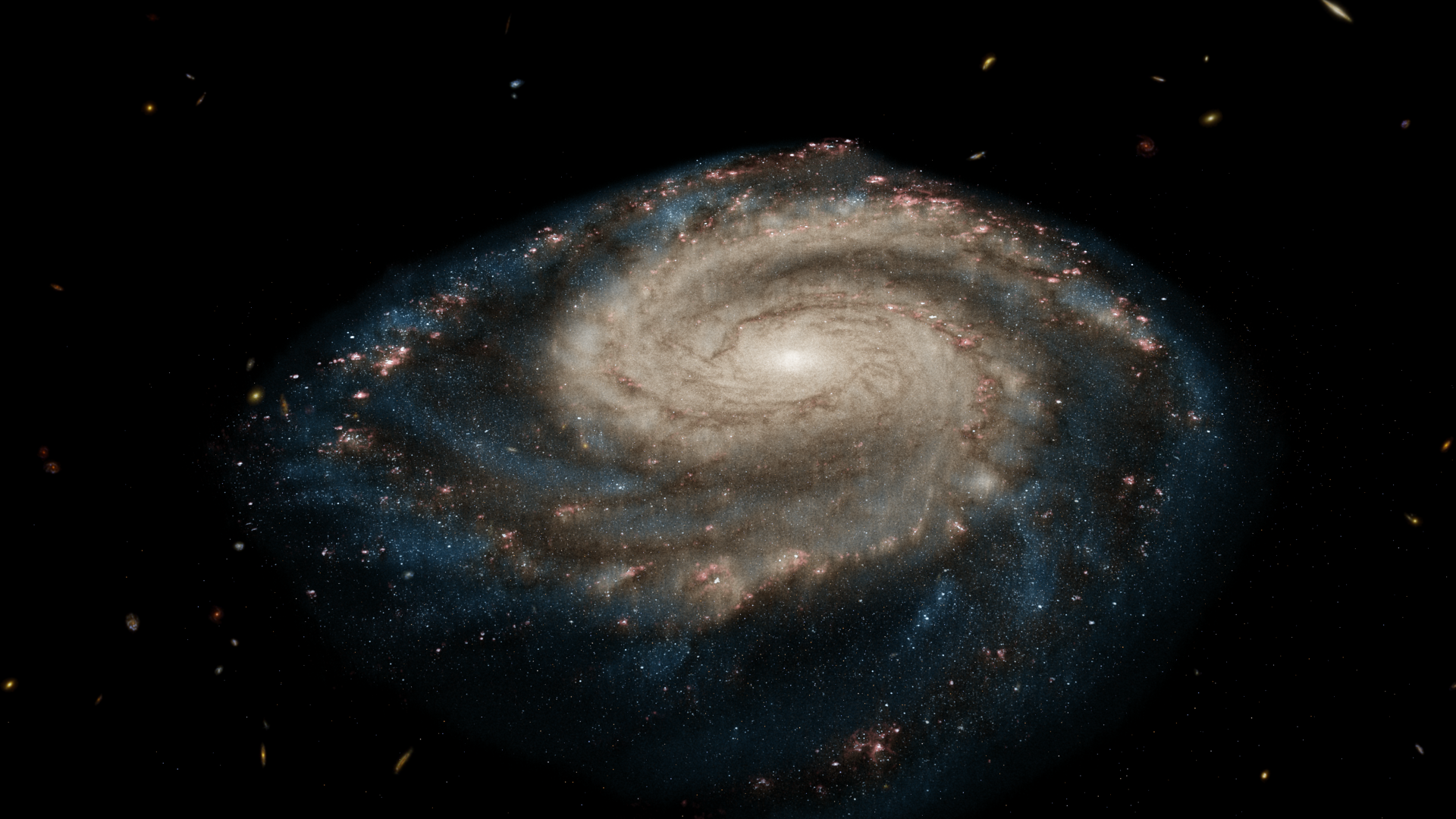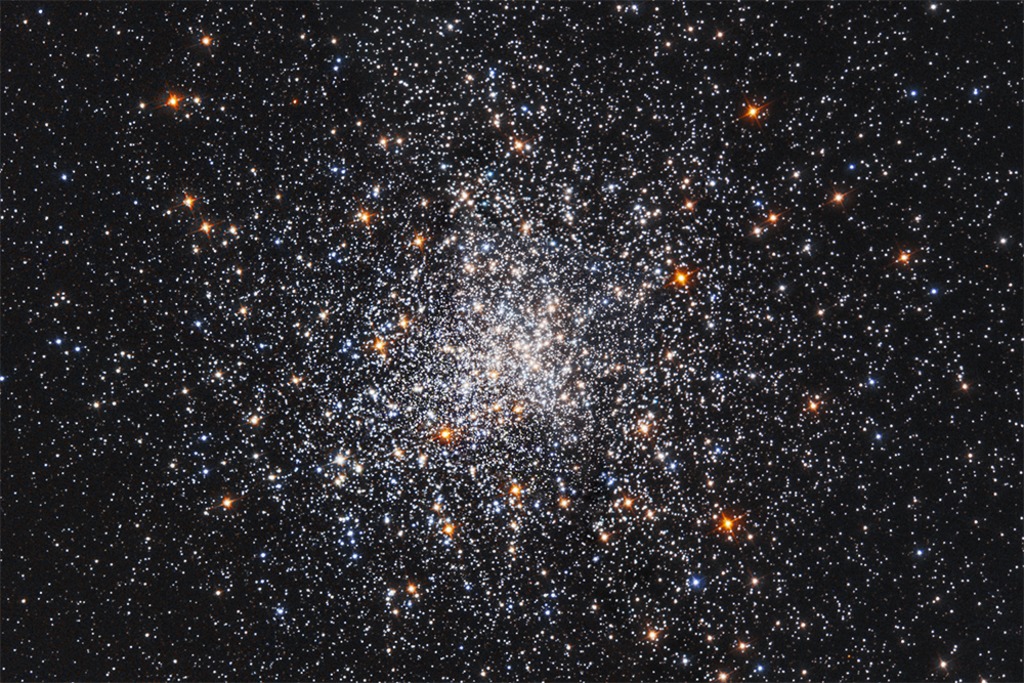The Whirlpool Galaxy from Hubble

The Whirlpool Galaxy and Companion Galaxy
The graceful, winding arms of this majestic spiral galaxy appear like a grand spiral staircase sweeping through space. In reality, they are actually long lanes of stars and gas laced with dust.
This NASA Hubble Space Telescope image provides a strikingly detailed view of the Whirlpool Galaxy, also known as Messier 51 and as NGC 5194. The image illustrates a spiral galaxy's grand design, from its curving spiral arms, where young stars reside, to its yellowish central core, a home to older stars.
The galaxy is nicknamed the Whirlpool because of its swirling structure. These curving arms are a hallmark of so-called grand-design spiral galaxies. Many spiral galaxies possess numerous, loosely shaped arms which make their spiral structure less pronounced.
These arms serve an important purpose in spiral galaxies. They are star-formation factories, compressing gas and creating clusters of new stars. In the Whirlpool, the assembly line begins with the dark clouds of gas on the inner edge, then moves to bright pink star-forming regions, and ends with the brilliant blue star clusters along the outer edge.
A companion galaxy, NGC 5195, can be seen on the right side and behind the Whirlpool. As this small galaxy drifts by, its gravitational muscle pumps up waves within the Whirlpool's pancake-shaped disk. The waves are like ripples in a pond generated when a rock is thrown in the water.
When the waves pass through orbiting gas clouds within the disk, they squeeze the gaseous material along each arm's inner edge. These dense clouds collapse, creating a wake of star birth, as seen in the bright pink star-forming regions. The largest stars eventually sweep away the dusty cocoons with a torrent of radiation, stellar winds, and shock waves from supernova blasts. Bright blue star clusters emerge from the mayhem, illuminating the Whirlpool's arms like city streetlights.
For More Information
Credits
Please give credit for this item to:
NASA, ESA, S. Beckwith (STScI), and The Hubble Heritage Team (STScI/AURA)
-
Project support
- Mark Malanoski (Global Science and Technology, Inc.)
- Frank Summers (STScI)
Missions
This page is related to the following missions:Release date
This page was originally published on Monday, February 27, 2017.
This page was last updated on Thursday, October 10, 2024 at 12:27 AM EDT.

